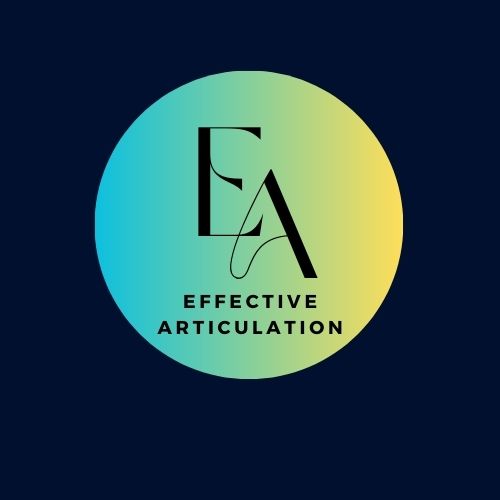Misunderstandings pop up everywhere – from casual chats to work meetings.
But why does trouble in saying what we mean sneak into our lives so often? It’s like we’re speaking different languages.
So, initially tackling why miscommunication is lurking about helps figure out how to avoid it.
Ever felt like your words went through a blender and came out as something else entirely to the person on the other side?
There’s a psychological toll here – it can make you feel disconnected, frustrated, or even upset. Just imagine, everyone mishearing each other, causing unnecessary stress!
Believe it or not, misunderstandings are more common than Starbucks coffee. Studies show that in workplaces, miscommunication contributes to about 14% of all communication mishaps. That’s tons of hours lost to untangling mixed-up messages.
Identifying these issues is the first step in improving communication. From the words we choose to how we deliver them, every bit matters.
By steering through these challenges thoughtfully, it’s possible to transform potential miscommunications into better conversations and stronger connections.
Unveiling Why Misunderstandings Occur

When communication hits a snag, there’s often something lurking beneath the surface. These root causes are like sneaky culprits that turn clear messages into puzzles. Let’s shine a light on these so we can keep the lines clear and strong.
Culture and language differences can easily trip us up. Different backgrounds come with their own unique phrases and norms. When two people from varying cultures chat, sometimes the way words are used doesn’t align, leading to a tangled mess of misunderstanding.
Our emotions and preconceptions like to entertain themselves by meddling with conversations. When we’re angry or stressed, it’s easy to misinterpret what’s being said. Words might sound sharper or softer than they really are because we tune them through our personal emotional music box.
The things we don’t say, non-verbal cues, play their own games too. A shrug, frown, or smile can say more than words sometimes. But the problem starts when those gestures get read wrong. It’s like trying to understand someone but only seeing half the story.
Lastly, let’s talk assumptions and biases. Jumping to conclusions before hearing someone out can turn any chat into a guessing game. It’s like playing telephone with yourself, where what you thought you heard turns into something very different.
By pinpointing these hidden factors, we arm ourselves with the awareness needed to nip miscommunication in the bud. This means less ‘What I really meant was…’ and more ‘Yes, exactly that!’ in our day-to-day exchanges.
Strategies to Foster Clearer Communication

Getting your point across clearly often starts with really tuning in. Active listening isn’t just a buzzword; it’s about diving into the conversation like it’s the most interesting thing you’ve ever heard. Practice this by repeating what someone says in your own words to make sure you got it right.
Words are like the clothing for thoughts, so choosing them wisely makes all the difference. Being clear and specific about your message helps cut through the noise. Instead of dancing around the topic, aiming for straightforward and direct communication is key.
Ever been in a chat where someone goes, ‘Huh?’ That’s your cue to ask questions. Seeking clarifications whenever something feels fuzzy is a lifesaver. It’s like saying, ‘Hey, I’m interested, and I care about what you’re saying enough to ask for more information.’
Paraphrasing and summarizing aren’t just for book reports. When someone says something important, bouncing it back in a concise form helps confirm that you’re both on the same page. It’s a win-win for understanding and being understood.
Developing these strategies takes a bit of effort, but it’s worth the trouble. Building habits around careful speaking and attentive listening ensures conversations are a two-way street where both parties feel heard and understood.
Bridging the Gap: Tools and Resources

Communication is a two-way street, so building that bridge between you and the other person is essential. One great tool for that is feedback, which opens up dialogue for a better understanding. Constructive feedback helps people know where they stand and what needs adjustment.
There’s no shortage of digital tools out there designed to help communicate better. Platforms like Slack, Microsoft Teams, or even Zoom can encourage real-time sharing and discussion when used effectively. When remote or virtual communication is well-managed, it can be just as good as face-to-face interactions.
If personal growth is the goal, there’s a bunch of resources, both online and offline, to sharpen your communication skills. Workshops, courses, or even self-help books offer guidance on mastering the art of good conversation. Think of them as gym sessions for your communication muscles.
Real-life examples can be powerful learning tools. Case studies where organizations or individuals turned failed talks into success stories provide insights into crafting strategies that connect people. They’re proof that with the right approach, any miscommunication hurdle can be overcome.
Building better communication isn’t just about tools or resources; it’s about wanting to understand and be understood. By using these methods, the barriers slowly but surely come down, paving the way for richer, more meaningful interactions.

Conclusion: Building a Foundation of Understanding
Building strong communication skills leads to relationships that are open, honest, and trustworthy. It’s about creating spaces where everyone involved feels heard and respected.
Empathy goes a long way in understanding where others are coming from. By putting yourself in another’s shoes, conversations become less of a battleground and more of a collaborative effort.
Patience is another key player. Communication improvements don’t happen overnight, but small, consistent efforts lead to big changes over time.
There’s always room to grow. Whether at home or in the workplace, aiming to improve how we communicate can make a big difference. It’s like adding another tool to your toolbox.
Looking ahead, embracing technology and new communication trends will play a pivotal role in overcoming future challenges in communication. Staying open-minded and flexible prepares us for whatever the future holds.
I hope you found this post helpful! Please let us know what you think by leaving a comment below.
If you have any topics, you’d like to cover in future blog posts, please share your suggestions in the comments.
Disclosure: If you click on the affiliate links provided in this article and purchase the product, I will receive a small commission from the company of the product. You will not pay anything extra for your purchase. You can read the affiliate disclosure for more information.



4 thoughts on “How to Deal with Misunderstandings in Communication”
thank you for sharing this thoughtful and practical guide to tackling misunderstandings in communication. It’s true that miscommunication is a common challenge, especially in diverse environments where cultural and emotional factors come into play. The focus on identifying root causes like assumptions, non-verbal cues, and emotional filters is insightful and helps readers understand the complexities of effective communication.
I particularly appreciate the actionable strategies offered, such as active listening, paraphrasing, and asking clarifying questions. These tips remind us that communication is a skill that requires practice and intentionality. Additionally, highlighting tools like feedback and digital platforms emphasizes how technology can bridge gaps, especially in remote settings.
Thank you for such a thoughtful response! I’m glad you found the strategies and focus on root causes helpful. Communication truly is a skill that grows with practice, and it’s great to hear that the tools resonated with you, especially in today’s digital world.
This article offers such practical advice on handling misunderstandings in communication. I love the emphasis on active listening and being mindful of tone and body language—two aspects that are often overlooked but can make a big difference in preventing conflicts. The tips on asking clarifying questions and staying patient resonate with me, as they create a foundation for respectful and open conversations. Misunderstandings are so common, especially in today’s fast-paced world, so having these strategies at hand is incredibly valuable. Thanks for providing such a thoughtful and insightful guide!
Thank you so much for your thoughtful feedback! I’m glad the emphasis on active listening and mindfulness resonated with you. It’s true—those small shifts in approach can make a huge difference. Appreciate your kind words!